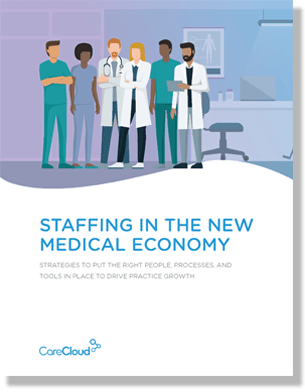Navigating Self-Pay Patients
Due to the growing demand for healthcare coverage, many individuals are excluded, either because they cannot afford the insurance plans available on the healthcare marketplace or because their states opted out of expanding Medicaid. These individuals, commonly called self-pay patients, often face significant challenges in securing primary care. The attraction of self-pay patients continues to rise, but few physicians are willing to accept them, arguing that there is an unfair risk of loss. This article discusses how self-pay patients can be treated respectfully and efficiently and considers how healthcare providers can make their facilities profitable.
The Importance of Standardized Payment Policy
A structured payment policy is critical to effectively accommodating self-pay patients. The first thing a practice should do if it is considering adopting a policy to accept self-pay patients is devise a payment policy. Though many practices can take self-pay patients with or without a structured payment policy, care must be taken to avoid fiscal problems. An organized payment policy proves vital in controlling the patients’ financial demands and prevents the loss of practice.
Several concerns must be considered when designing the policy to address the needs of employees with disabilities. Self-pay costs differ from co-payment costs of insurance, where the patients are fully charged; hence, they use cash, credit, or debit to pay. Also, practices must set aside the costs of referrals since patients attending follow-up appointments with specialists may spend a lot of money. The patient’s financial status should always be evaluated; it helps to improve the use of better online payment services.
Uncovering Hidden Health Coverage
Many self-pay patients may consider themselves to have no healthcare insurance, but this is not always the case. They might enjoy limited or concealed insurance coverage that significantly cuts their expenses. This coverage could be enclosed in documents they need to learn about or hidden behind bureaucratic procedures.
To prevent patients from overpaying and to optimize practices’ reimbursement chances, practices should use an insurance and healthcare checklist. The list should be filled in before the patient’s arrival at any scheduled appointment to ensure that all possible cover sources have been examined and utilized. This approach is also beneficial to the patient, who might be relieved from a financial burden, and it is also profitable for the practice to be reimbursed adequately.
Offering Flexible Payment Options
Health costs are easy and fast to accrue, especially for those without health insurance or those with expensive insurance deductibles. Through payment plans, practices can make healthcare affordable and encourage patients to access the necessary care without paying all related costs when receiving services.
Payment at the Time of Service
Adopting policies that minimize financial risk for self-pay patients, such as cash-with-service policies, is essential for healthcare practices. These policies ensure providers receive payment for services rendered, reducing uncollected balances. Some practices may collect payments upfront, while others may bill patients after their appointments.
However, it should not be overlooked that not all patients would be able to pay upfront. In such circumstances, practices may consider different options, such as promissory notes or partial payments, with the balance settled appropriately. Accessibility is all-important. Many patients live paycheck to paycheck and may be faced with financial constraints.
Conclusion:
Analyzing the position of self-paying patients in the healthcare market helps to consider specific issues, but it also finds potential opportunities for practice to respond to these patients. The following structured payment policies can be adopted: service providers can offer flexible ways of paying bills and explore insurance coverage options to the maximum. This will help them deal with self-pay patients and, at the same time, protect their financial status. This approach allows patients to get the needed care and establish rapport with physicians and other attendants.




